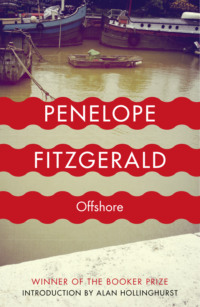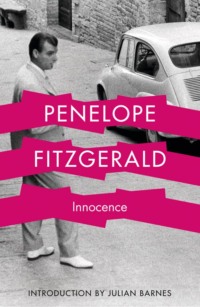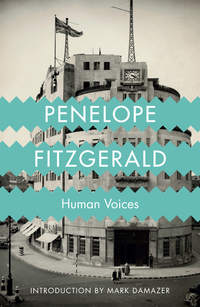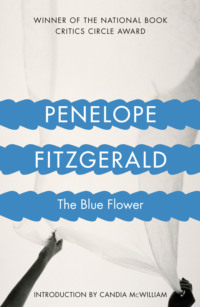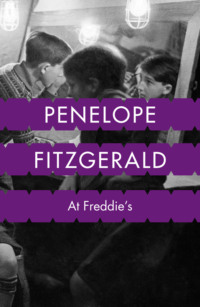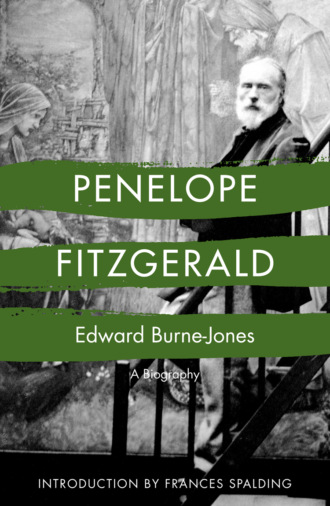
Полная версия
Edward Burne-Jones
Mr Jones’s shop was at 11 Bennett’s Hill, itself quite a new and very respectable street in a district which had recently covered green fields with raw pavements. ‘The town itself has walked uphill’, in the words of the local comic singer Dobbs, the population having nearly doubled between 1821 and 1831. At the corner of the hill and Waterloo Street was a News and Commercial room; near to it, with a bold classical portico, was the Society of Artists’ building, which was probably the reason why Mr Jones opened as a frame-maker close by. All this was decorous and decent, but inescapably near was a frightening Birmingham which lay in wait, after a not long process of ‘coming down’, for the failed small clerk and tradesman. This was the swarming city of ‘Brummagem roughs’ and Irish immigrants, which was neither policed nor lighted (except in winter) until 1839; Newman, in his first days at the Oratory, said that the Irish congregation ‘made the air like drinking hydrogen or carbonic gas’. Although the town escaped the worst of the cholera epidemics, these were the hungry thirties, and the masses of operatives (including working children of seven and upwards) were unskilled and unsettled, going home to crowded ‘courts’ and rookeries where dozens of families clung together, sharing one tap and one privy. Birmingham was said to have over a thousand of these red-brick warrens, more than any other city, and among them were ‘scores of houses of ill-fame’. In 1848, when after a long agitation the Government introduced the Health of Towns Bill, the official Inspector to the Board of Health respectfully laid before them for consideration that ‘the borough of Birmingham is not so easily healthy as it may be, on account of unpaved streets, confined courts, open middens and cesspools and stagnant ditches’. The Birmingham ‘wares’ themselves, on the other hand, exhibited an alarming vitality. Thomason’s in Church Street claimed that he could do all that Cellini did, and cast anything in bronze, including life-size statues; Pemberton’s would imitate any pattern in ‘metallic bedsteads’, Jennens and Betteridge would manufacture any object in papier-mâché inlaid with pearl shell. It would be quite wrong, of course, to think of all these products as shoddy: Gillott’s took pride in the fact that Charles Reade had written the whole of It’s Never Too Late to Mend with only one of their steel pen-nibs. The ‘thousands trades’ had their thousand separate voices, and though the city was never quite without music – rarely, indeed, without Handel’s Messiah, which was given at festivals from 1823 onwards – it was hideous with the volleys fired off in iron-lined proofing-houses where the gunsmiths tested their weapons all day. ‘At night,’ Carlyle wrote in Past and Present, ‘the whole region burns like a volcano, spilling fire from a thousand tubes of bricks’. The streets at large reeked of drunkenness, the universal resource. The Town Council, when Edward Burne Jones was six, received a report from the Borough Magistrates to the effect that ‘the present police force was totally inadequate to maintain the peace’. In fact, in the Chartist Riots that year Mr Jones was sworn in, surely one of the most unlikely of special constables, and for a few weeks of terror of the streets seemed ready to crawl uphill and overwhelm them.
A queer, close life took its quiet course in the back shop in Bennett’s Hill, bolted against Saturday night drunks. Mr Jones and his friend, Mr Caswell, turned over pictures left for framing, and the old dark canvases which Mr Caswell, who was retired, liked to buy cheap and touch up; at one time they got what must surely be a Turner, but ‘the sea was too quiet’ and Mr Caswell added a number of large waves; or they would talk about ‘the first historical painter that Birmingham had produced, and how Mr Gillott the pen-maker had paid £1,000 for a historical picture and felt disgusted, and then they would shake their dear old heads’.4 To the little boy the stock-in-trade was repulsive, dark and oily-smelling, in faded frames. Like most lonely children, he drew pictures – mostly of demons – to give substance to the stories he told himself, but the feeling at 11 Bennett’s Hill was that nothing should be wasted, and Mr Caswell immediately ‘made me draw a coffee-pot with all the reflections (and no doubt it wasn’t a bad thing to do) but when you looked closer demons were coming out of the pot’.5 Music he loved, but he scarcely realised this yet, since there was no good choral singing at St Mary’s and Mr Jones could not afford, or did not choose, to go to concerts. Sixty years later, Burne-Jones said that he had passed a childhood without beauty. There was none, certainly, in the little house itself or the ‘chairs, carpets, tables and table furniture each duller and more commonplace than the other’, or the picture of a cemetery over the ‘hard square-featured clock’, showing the tombs of Miss Sampson’s Yorkshire relatives.
Beauty, therefore, was something the child could only recall in fragments, which could not really be distinguished from happiness; he meant such things as the smell of currant-loaves and wallflowers in Mr Caswell’s kitchen-garden, and rare outings with Mr Jones, who, wretched though his taste in art might be, ‘would walk tired miles to see a cornfield’. There were also the pretty faces of the Miss Choyces, farming cousins in Warwickshire, where he was sent occasionally – it was a milk and cheese farm – in the dubious hope of his growing stouter. The Choyces took him on one occasion to see the Cistercian monastery at Charnwood, and he dreamed for years of being shut away in peace behind its great doors. But, for Burne-Jones as for Ruskin, beauty was not inherited but earned. Ruskin, so he tells us in Praeterita, learned to love the movement of water through watching the gutter at the back of a baker’s shop; Burne-Jones began to love plant form by being allowed to pick one wall-flower. Beauty they both felt as a craving which could be satisfied and perhaps only valued – for as artists neither of them ceased to be Evangelical at heart – only after a hard struggle. Ruskin, however, also warns us that those who are starved of beauty in childhood will find the love of it in later life ‘rampant and unmanageable’.
Many of these details were recalled by Burne-Jones in the last few years of his life and taken down by his faithful studio assistant, Thomas Rooke. These notes were of course used by Lady Burne-Jones in her Memorials, and yet without falsification (that was impossible to her) she seems to have made her husband’s childhood gentler and more pathetic than it really was. She left out the child’s horrors, which are not less real when they are overheard and half understood. The bird-scarer passed the gate on the way to the open fields, and would stop suddenly and pull horrible grimaces.6 In a house a few doors down, a father had cut off a boy’s fingers when he wouldn’t take his hands off the cloth. Another had mistreated his son so horribly that one of them had taken poison, and though he was brought round the poison ‘worked itself out’ years later, making him mad.7 Three miles along the road out of Birmingham a lonely shack had to be passed where a man had lived who had gone crazy through disappointment in love; the pond where he had drowned himself was still in front of the shack.8 Terror attached to certain names and words – ‘progeny’ was one – and to the sight of the swollen full moon. All these were lonely fears, but less so than his first experience of education, when he was seven years old. His aunt, Mrs Choyce, took him to a small school at Henley-in-Arden during one of his country visits and stayed to talk to the master while Ned went on alone into the classroom, where he met ‘a shout of derision’9 from the boys he when they saw how small he was. Writing fifty years later to Olive Maxse, he described himself as ‘the kind of little boy you kick if you are a bigger boy’.10
This may have been a good preparation for King Edward’s Free School ‘where I proceeded at the age of 12’. By this time Burne-Jones had developed, in spite of his delicacy, a surprising power of survival. At King Edward’s, magnificent grammar school though it was, ‘the masters sometimes fought the boys’. Ned himself was stabbed in the groin during prayers ‘and I found something warm on my leg and putting my hand there found it was blood’. He had the uneasy distinction of being taken home in a cab, to avoid explanations with the headmaster; it was the first time he had been in a cab and he was sick on the floor.11 Later came the traditional challenge ‘from a very large boy’ to fight him after school. Ned, who was terrified, ‘flew at him like a dog and then it was all over and I was sick as a dog’.12, Instruction was in two large rooms for all classes, and order was kept by beating and by end of term prizes. But in his seven years he received an excellent education and never quite got over his surprise at knowing more Latin, history and geography than William Morris, who went to Marlborough.
Like many imaginative children, Burne-Jones could only learn from one master, though his temperament, needing an absolute hero, rejected Mr Thompson’s name and the coarse black hair on his hands. ‘I worshipped him when I was little, and we used to look at each other in class. I wonder what he thought when he looked.’ The boy survived furious beatings to absorb what the teacher had to give; his habit was to improvise on a few words read out at random – ‘with the flattest sentence in the world he would take us to ocean waters and the marshes of Babylon … and the constellations and abysses of space’. To this Burne-Jones must have responded completely, since to the end of his career he drew inspiration from the word itself – the image that springs from the name. He noticed, however, as he listened to Mr Thompson’s fantasies in word-derivation, that the master was sometimes drunk.13
Ned entered King Edward’s in 1844, ten years after the school had been rebuilt to Barry’s hard Gothic designs, which left the outside impressive and the inside dark and draughty. The headmaster was Dr Prince Lee, a magnificent autocrat who taught the boys that every minute of life was accountable, his motto being Salpisei – ‘the trumpet of judgement shall sound’. Ned was put into the ‘commercial’ department, where Greek was not studied, and the boys left at fifteen or sixteen with a sound preparation for business. It was Mr Thompson who advised Mr Jones, when his son was fifteen years old, to let him stay on at school. Instead of going straight to a counting house at eight shillings a week, which meant a positive contribution to the economy of Bennett’s Hill, Ned passed straight into the Classical school, where boys were prepared for university. His friends received the impression, when they called for tea at Bennett’s Hill, that ‘he always used to have nice things about him, to a schoolboy extent’. In point of fact, as Ned told Rooke, his pocket money, until he was eighteen years old, was a penny a week, and his father allowed him to sell his school prizes to buy his class books.14 Even homework was an extravagance because it meant burning a candle till two o’clock in the morning.15 Mr Jones agreed to this, because he supposed it was the right thing.
In the upper forms of the school Burne-Jones had his first real experience of friendship, that is, of openly giving and receiving affection; he formed his own circle, who were staggered by his practical jokes (these sometimes attracted the attention of the police) and fascinated by his queer mixture of gentleness and underlying fierceness, not so well hidden then as it was later. This was the second quarter of the nineteenth century, the golden age of intense male friendships, whose delicate emotional balance is hard to assess today. Chivalry and uncertain hope entered into them when the boys, in the haven of the school library, made themselves ‘exquisitely miserable’ over Keats on ‘long hot afternoons’ or read Tennyson’s Morte d’Arthur and In Memoriam. Outside, they were adolescents, and Ned was growing too tall for his strength. They were ‘quizzed’ by the girls, and at a loss for a smart reply.
It was Richard Dixon who first introduced Burne-Jones to Keats; coming from a large poor Methodist household, he later became a canon of Worcester, a poet and the correspondent of Gerard Manley Hopkins. Another intimate was Cormell Price; ‘Crom’ was two years younger than Ned and had known him in the Commercial school. He was to try many things – medicine, Russia, teaching – before becoming headmaster of the United Services school (and consequently of Stalky & Co), without ever adapting significantly to this world. He began and ended as hopelessly enthusiastic and unpractical Crom; others looked after him. Harry Macdonald was the son of another Methodist minister on the Birmingham circuit, whose large family were to be of the greatest importance to Burne-Jones.
Both Dixon and Cormell Price support Burne-Jones’s recollections of the crude misery of Birmingham. Crom Price remembered seeing men killed at prize fights. ‘At Birmingham school a considerable section of the upper boys were quite awake to the crying evils of the period,’ he told Mackail, William Morris’s biographer. ‘… I remember one Saturday night walking five miles into the Black Country, and in the last three miles I counted more than thirty lying dead drunk on the ground, more than half of them women.’ As small boys it had shocked them and made them run faster for the safety of the lighted shop fronts. Now it was a matter of humanitarian conscience. How could the world be served?
From concern with human suffering and the uneasy craving for beauty there was only a short step, for an adolescent thinking young Evangelical, to the edge of the Apostolic movement. (The precise shade of Mr Jones’s Evangelicalism can be judged by the fact that Ned was not allowed to read novels until he was in the First Class, but did occasionally go to the theatre.) In 1849, the same year that Ned entered the Classical school, Newman was sent to Birmingham and arrived in a fly full of luggage and plaster Madonnas to open the Oratory in an old gin distillery in Alcester Street. His first sermon, preached to hundreds of operatives and dirt-poor Irish, with a sublime inappropriateness that could only come from great spiritual depths, was on ‘how to escape the false worship of the world’. There was of course no question of Mr Jones and his son attending mass. But ‘the effect of Newman, even on those who never saw him’, Burne-Jones told Frances Graham, was a ‘leading – walking with me a step in front’. The adventure of the Oratory impressed him as a glorious gamble ‘putting all this world’s life in one splendid venture … in an age of sofas and cushions he taught me to be indifferent to comfort, and in an age of materialism he taught me to venture all on the unseen.’ In this way Newman at long distance touched the unborn firm of Morris & Co., and through wallpaper and rushback chairs would continue to preach that there are greater things in this world than comfort.
Newman was in no way a mediaevalist and did not recognise the ‘note’ of sanctity in the mediaeval church, but those who saw and heard him from a distance did not always make this distinction. The Oratory entered into the classroom mythology of the King Edward’s boys, and Ned became ‘Edouard, Cardinal de Birmingham’, sending missives illuminated in red and blue, while Crom Price was a less distinguished member of the ‘Order of St Philip Neri’ (Newman’s own order). When the ‘cardinal’ was invited during his holidays to Hereford by a brother of Mr Caswell’s, a further transformation took place: at the cathedral he heard church music well sung for the first time, and saw in the building itself something he had never guessed from the brand new Gothic of King Edward’s. He was in direct contact with beauty, the acute physical and emotional effect of ‘old music’ combining with the remoteness of the lamp-lit chancel. It was his own ‘note’. At the same time he passed easily under the influence of a young, serious, singing and choir-mastering Puseyite clergyman, John Goss, who had been at Oxford in the heroic days of Newman’s secession, attending his last university sermon on ‘the parting of friends’. This had now been printed, and Goss lent the volume to Ned. It became clear to Burne-Jones that he must be a priest like Goss; if he was to serve the drunks and vagrant workers that littered the pavements on the way to school, it must be in a community like the Oratory, or perhaps like the semi-monastic group suggested in Hurrell Froude’s Project for the Revival of Religion in Great Towns. There must be a meeting point between the need to serve and the need for beauty. Mr Jones, when his son returned to Birmingham, was quietly ready to exchange his pew in St Mary’s for one in Puseyite St Paul’s, where there was ceremonial and music. He had made up his mind that Ned was to become, if not a successful manufacturer of steel pens, then a bishop.
This, of course, meant Oxford, although most of the Upper School boys went on to Cambridge. Dixon was ready to matriculate and Crom Price, two years younger, hoped to follow them. Both of these were down for Pembroke, where the master, Dr Jeune, was a former headmaster of King Edward’s, but Goss had been at Exeter, and for Exeter, therefore, Mr Jones put down his son. When he found that Ned, unlike Dixon, had not been awarded an exhibition, he faced a total payment, over the three years before an honours degree, of about £600. There would be tuition fees of about £20 per annum, coals, room-rent, hire of furniture, charges for servants (about £30 a term), kitchen bill, buttery bill (for bread, butter and beer), washing bill, college subscriptions; even the travelling expenses to Oxford were a consideration. With heaven knows what further economies and calculations, Mr Jones ‘determined to send him at his own expense’. The Bennett’s Hill house was let, except for the workshop, and a smaller house taken, where Miss Sampson and the furniture accompanied them, father and son shared a bedroom as usual, and a lodger was squeezed in as well. This was in the Bristol Road, which the Memorials tell us ‘provided better air and exercise’, though in fact the drains at this time ran into open ditches on the west side.
Ned matriculated on 2 June 1852. He had his first sight of the city of Oxford, the river, and the meadows. Excitement, and possibly some guilt at the sacrifices made for him, brought on a severe illness, the first since he had nearly died at birth, but one which was to set a pattern for the rest of his life – heart weakness, spectacular fainting, a black depression on recovery. Harder to bear, at the age of nineteen, was delay; he would have to wait till the following spring before there was room for him in the overcrowded college.
Kicking his heels in Birmingham, he went to call for the first time on his school friend Harry Macdonald, and so met the family where, a few years later, he would find his wife. They were then living in a house in Nursery Terrace, Handsworth, the Rev. George Macdonald having been recently appointed for the second time to the Birmingham circuit.
In 1852 the minister’s house was crowded from attic to cellar. The children at home were Harry, Alice, Carrie, Georgie, Fred, Agnes (the prettiest) and Louisa. They had already lost two little brothers, and had gone upstairs to see one of them ‘stamped with the marble hue of death’; Carrie had only two more years to live.
Their story (as it is told by their descendant Lord Baldwin in The Macdonald Sisters) is of an unworldly preacher bringing up, or rather letting his wife bring up, a large family on a tiny income, sometimes less than £200 a year, so that to buy a book or to have the piano tuned was a heroic event. This, however, was never felt as poverty, and the affection between the sisters was very close. They all had in common integrity and decisiveness – William de Morgan said that they never began a sentence without knowing how it would end. Visitors who were in the least pretentious were cut short. Lord Baldwin records that a preacher who spoke of his heart as ‘black, and full of stones’ was told by little Louie that he must mean his gizzard. This firmness went with a tendency to melancholy and poor health. What redeemed it, besides its own moral purity, was a dry sense of humour and an acceptance of the ‘stages of life’, which implied a reverence for life itself.
Such unworldliness, combined with sharpness, could alarm casual visitors. Ned shrank. But the praying, singing, cooking, sewing, turning, boot-patching, ‘putting-up’ of preserves, making do, giving charity, racing up and down stairs, self-criticising and self-improving could make way at once for a lonely visitor. Ned, although he called with Crom Price, could be seen at once as lonely. To Georgie, a child in a pinafore, his pallor and delicacy suggested that he needed looking after. Georgie, at the age of ten, was quite used to this. She noticed also an unexpected source of power in him, like an illumination, when the conversation moved him.
How Burne-Jones – the Memorials are ‘confident that the mystery which shrouds men and women from each other in youth was sacred to him’ – dealt with his own growing sexuality can hardly be judged. He referred to it only ironically, for example, in reference to a visit to the theatre when he was staying at the Camberwell home of his father’s sister, Aunt Catherwood. Mr Catherwood took him to the Lyceum pantomime, where they stood in the pit and Ned fell hopelessly in love with the probably forty-year-old Fairy of the Golden Branch. ‘She held out something, and I thought it was too beautiful ever to be.’ But this was not surprising, since the Fairy – supported by Blueruino, an Illicit Spirit – was none other than Madame Vestris herself. Complementary to these fantasies was the very strong reaction of a sisterless young man, in the presence of young girls en fleur, on the verge, some sooner, some later, of a natural but despoiling experience. This, which was to be one of the recurrent themes of his painting, took its origin from the daughter-crowded minister’s house in Nursery Terrace.
In the Hilary Term of 1853, Burne-Jones finally went up, and passed from the small shop and the grimy streets of Birmingham to Newman’s own university.
Конец ознакомительного фрагмента.
Текст предоставлен ООО «ЛитРес».
Прочитайте эту книгу целиком, купив полную легальную версию на ЛитРес.
Безопасно оплатить книгу можно банковской картой Visa, MasterCard, Maestro, со счета мобильного телефона, с платежного терминала, в салоне МТС или Связной, через PayPal, WebMoney, Яндекс.Деньги, QIWI Кошелек, бонусными картами или другим удобным Вам способом.




